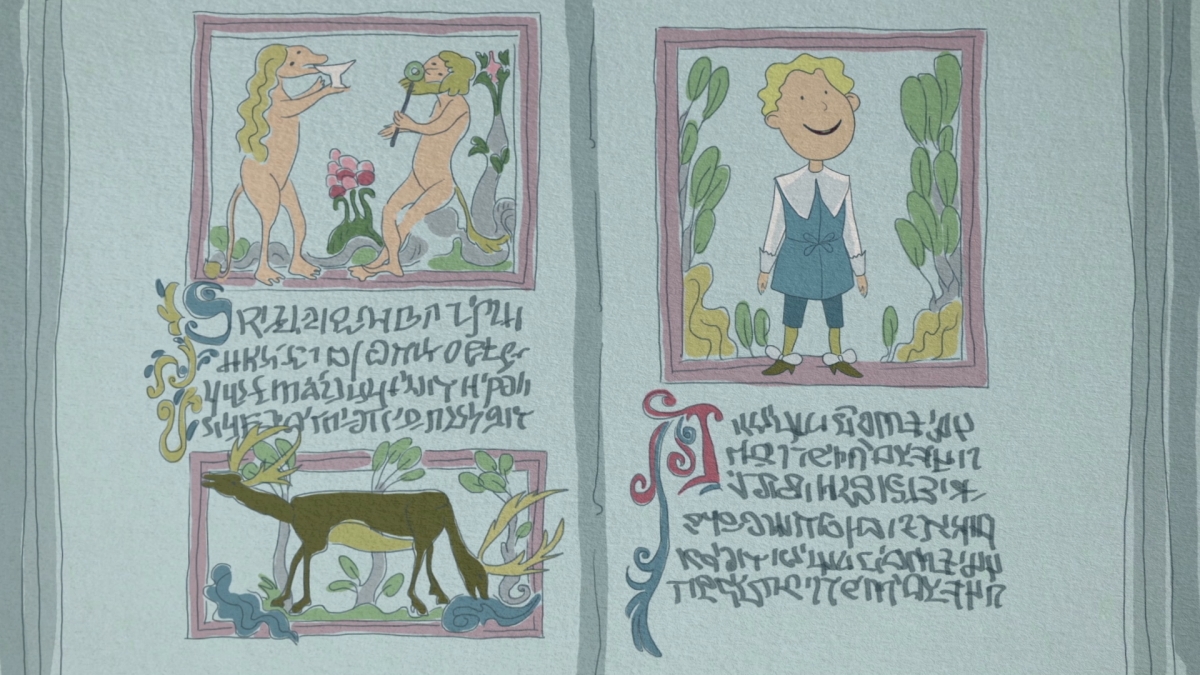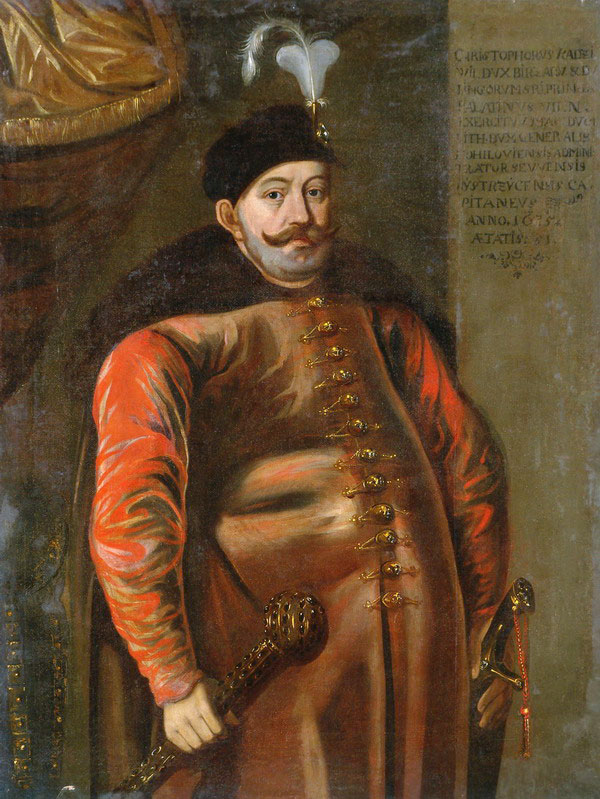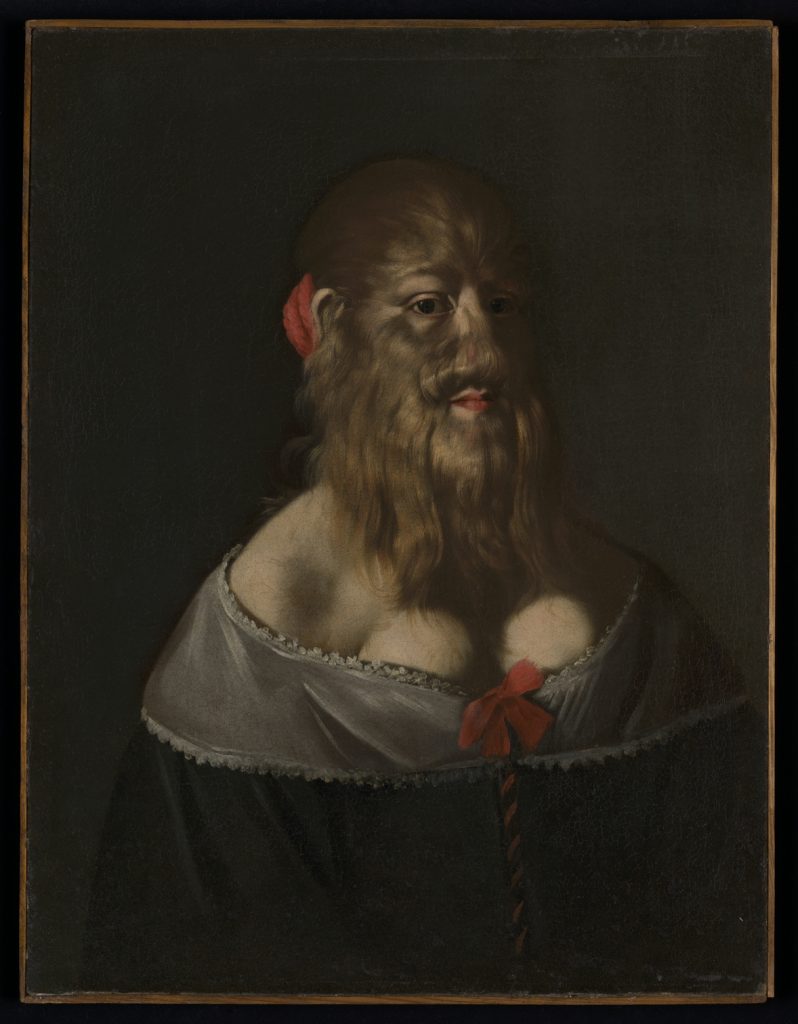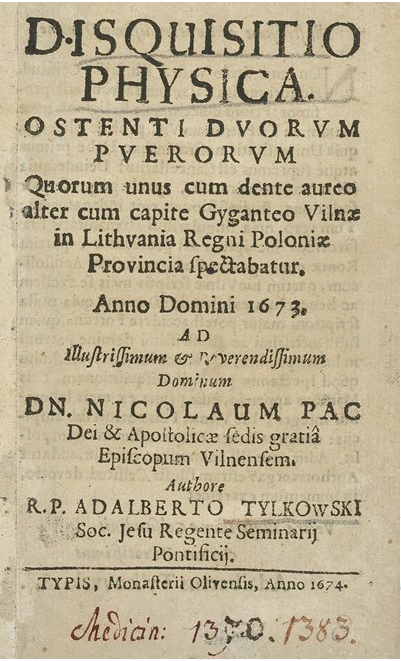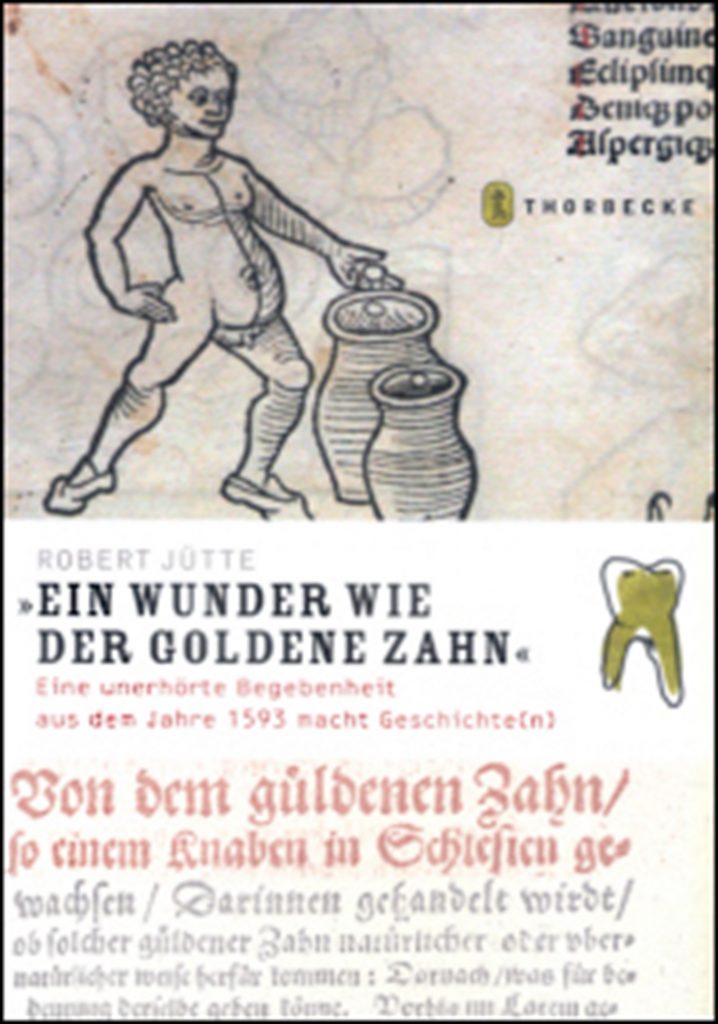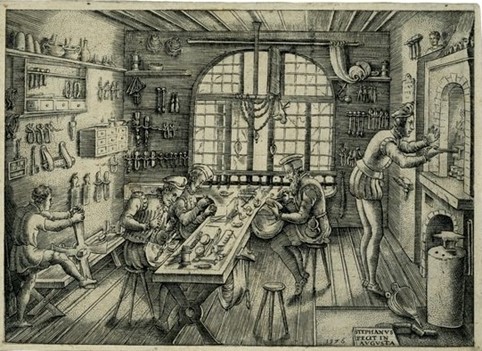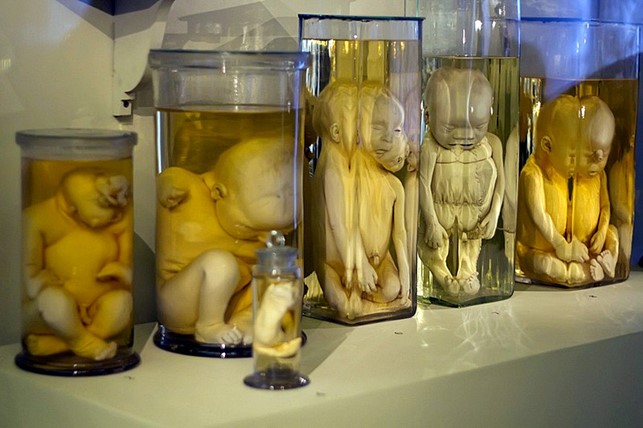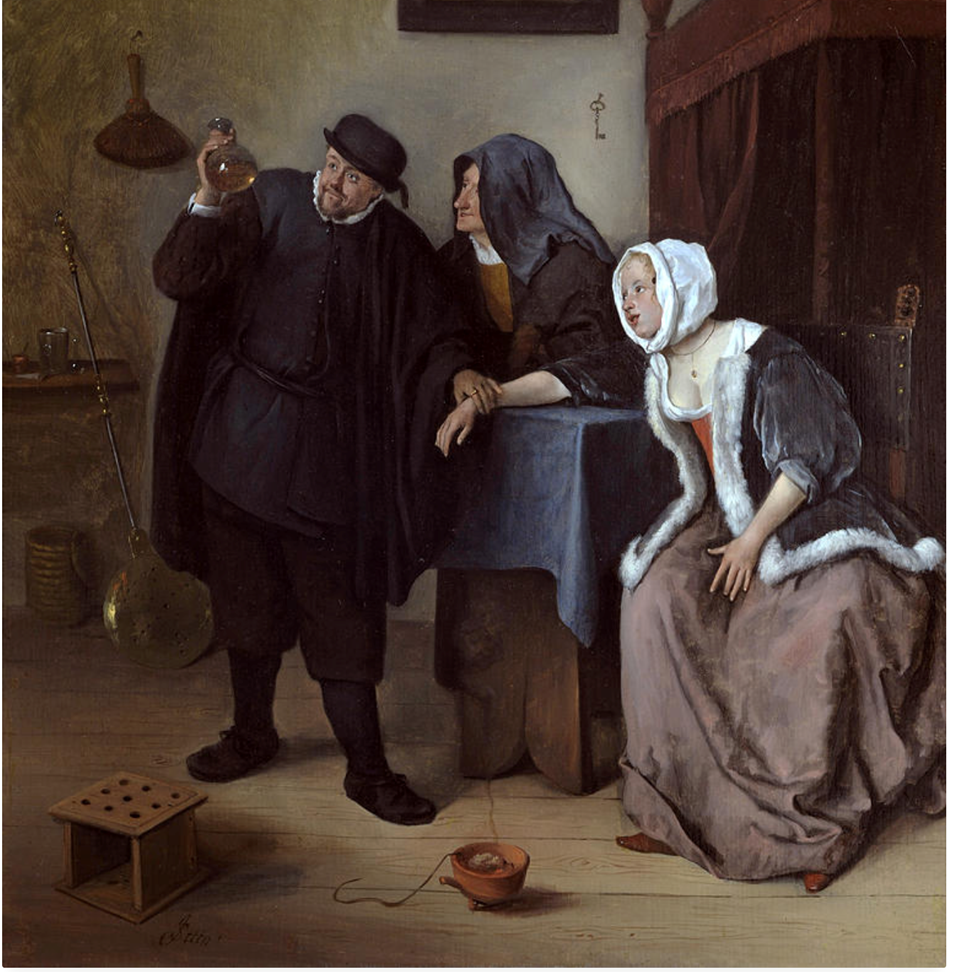Paul, the Wonder Boy from Vokė
Centuries ago, oddities and anomalies were just as popular as internet jokes nowadays are. Fairs and public festivities attracted hundreds of spectators eager to get a glimpse of “freaks of nature” and other “monsters” displayed for entertainment: manly women, effeminate men, black albinos, Siamese twins, dwarfs and very tall humans. Such entertainment business thrived throughout Europe and beyond.
The world wishes to be deceived
“
A distinguished medical doctor Maciej Vorbek-Lettow (1593-1668) owned a knife extracted from the gut of a peasant that swallowed it. The rarity reached him from Königsberg and the doctor donated it to Duke Krzystof II Radziwiłł who established a private kunstkamera. The museum of rarities housed such items as an image of the foot-writing man or a portrait of a peasant.
The common worldview was based on dichotomies: masculine and feminine, black and white, Christian and heathen, etc. Every challenge to such order had shock-value.
Abnormal foetuses were preserved and put on display. A distinguished medical doctor Maciej Vorbek-Lettow (1593-1668) owned a knife extracted from the gut of a peasant that swallowed it. The rarity reached him from Königsberg and the doctor donated it to Duke Krzystof II Radziwiłł who established a private kunstkamera. The museum of rarities housed such items as an image of the foot-writing man or a portrait of a peasant.
During the Baroque era a multivalent Italian term curiosità covered the whole variety of unusual things. The existence of rarities required an ample variety of explanations. Those drew on supernatural and divine as well as infernal and worldly notions. Many explanations rested on improbable foundations and yet did not fail to convince certain social groups.
However, beginning with the mid-17th century the “wonders” started losing their mystique and were addressed with a critical eye. As curiosities were no more associated with the macabre and the exotic, they were subjected to empirical analysis and turned into tools for understanding the world.
Curiosities attract
“
Barbara van Beck (1629–1668?) achieved fame across Europe because her face and much of her body were covered in hair. Italian-born conjoined twins Lazarus and Joannes Baptista Colloredo were well known throughout Europe because Joannes Baptista grew out of his brother’s body and only had one leg. The twins toured Warsaw and other Polish cities in 1644. Perhaps they reached Vilnius too?..
Constance of Austria, the wife of King Sigismund Vasa, owned a female dwarf born in present-day Belgium, Helena Antonia (1579– after 1621), famed for her beard. The woman suffering from hypertrichosis visited Vilnius several times as part of the royal court.
Barbara van Beck (1629–1668?) achieved fame across Europe because her face and much of her body were covered in hair. Italian-born conjoined twins Lazarus and Joannes Baptista Colloredo were well known throughout Europe because Joannes Baptista grew out of his brother’s body and only had one leg. The twins toured Warsaw and other Polish cities in 1644. Perhaps they reached Vilnius too?..
Matthias Buchinger (1674–1740), a 74-centimetre-tall man from Bavaria born with no hands and feet, nonetheless became a well-known painter and musician – he was a virtuoso flute-player. He married four times and fathered fourteen children.
Natural scientists and the general populace of 18th-century Europe took particular interest in black albinos, people characterized by absence of pigment in the skin, hair and eyes. They were transported over from the colonies and analysed as if they were half-human.
Owners of golden teeth
The list of extraordinary “living artefacts” also includes children with golden teeth. They were of particular interest to alchemists, since if gold was able to “grow” in a human mouth, it follows that gold could be “grown” by mixing various substances. One boy with a golden tooth reportedly lived in Vilnius. Professor of mathematics and philosophy at Vilnius University Albert Tylkowski recorded his story in 1674. He was known for authoring a number of controversial texts.
Do You Know?
The golden-haired boy was born in January 1670. A son of the baker, Paul had reddish hair all over his arms and neck. He had lively eyes, high forehead and was known for capricious behaviour, all being the signs of exceptional inner warmth – the most important requirement for a golden tooth to grow. His mother discovered the tooth in 1673, when Paul was three. The news about the “miracle” were immediately related to relatives and neighbours, spread across the city, and soon made Paul its most famous resident.
Bishop of Vilnius Mikołaj Stefan Pac also came to see the boy. Suspicious of a sham, he ordered physicians, surgeons, and goldsmiths to examine the tooth carefully, since Paul was the sixth child in the family and none of his brothers or sisters were extraordinary.
The golden tooth discovered
“
Aiming to explain the golden tooth, he drew an analogy with the Cretan goats that allegedly also bear golden teeth. Tylkowski believed that the golden tooth had grown precisely where the boy’s innate warmth of soul overpowered the vapours of cholera. The tooth had formed of natural human salts, sulphur and mercury, a combination that condensed into gold through a contact with bile and warmth of the heart.
Albert Tylkowski visited the boy on 20 September only to conclude that one of Paul’s upper teeth is indeed golden, despite its otherwise entirely ordinary look. Tylkowski applied the so-called Lydian stone used in trying gold and silver. In terms of its colour, the tooth looked like the gold from Italy and France. Unconvinced, the “experts” resorted to scratching gold off the boy’s tooth until the gums started bleeding. Tylkowski concluded that this is a sign of the Divine Providence and a reminder of human sins.
Aiming to explain the golden tooth, he drew an analogy with the Cretan goats that allegedly also bear golden teeth. Tylkowski believed that the golden tooth had grown precisely where the boy’s innate warmth of soul overpowered the vapours of cholera. The tooth had formed of natural human salts, sulphur and mercury, a combination that condensed into gold through a contact with bile and warmth of the heart.
Tylkowski relates that the miraculous story ended in August 1673. After Paul went through a minor fever, the gold simply disappeared. He considered the possibility of deceit, perhaps the boy was charmed, but in the end he concluded that the tooth was not golden, only gilded.
Between truth and legend
Vilnius, Tylkowski believed, was a fertile ground for all kinds of other weird things too, because the city lay surrounded by sandy hills that, without a doubt, contained lodes of different metals.
Lithuanian dentists regard the story as possibly the first instance of application of a golden tooth crown. The claim being that some Vilnan goldsmith made this crown and placed it on the child’s tooth. But again, could Paul’s middle-class parents afford such a luxury? And if so, why would a three-year-old need it anyway? Some suggest the golden tooth was in fact covered with calculus.
Only three boys born in January 1670 were christened by the name of Paul at the St John the Baptist Church, according to its baptismal metrics. According to Tylkowski, the boy was born in a village near Vilnius. This leaves us only one Paul, the son of Jan and Regina Urbanowicz from Vokė, baptised on 26 January.
Many authors mention the “golden boy” from Vilnius, but it was Christoph Muller (d. 1585), a seven-years-old boy from southern Poland, who became a real celebrity in Europe. He also had a gold tooth and once his father discovered it, the boy became a sensation and toured throughout German lands, pulling dozens of physicians, theologists, alchemists, and astrologers into passionate discussions.
